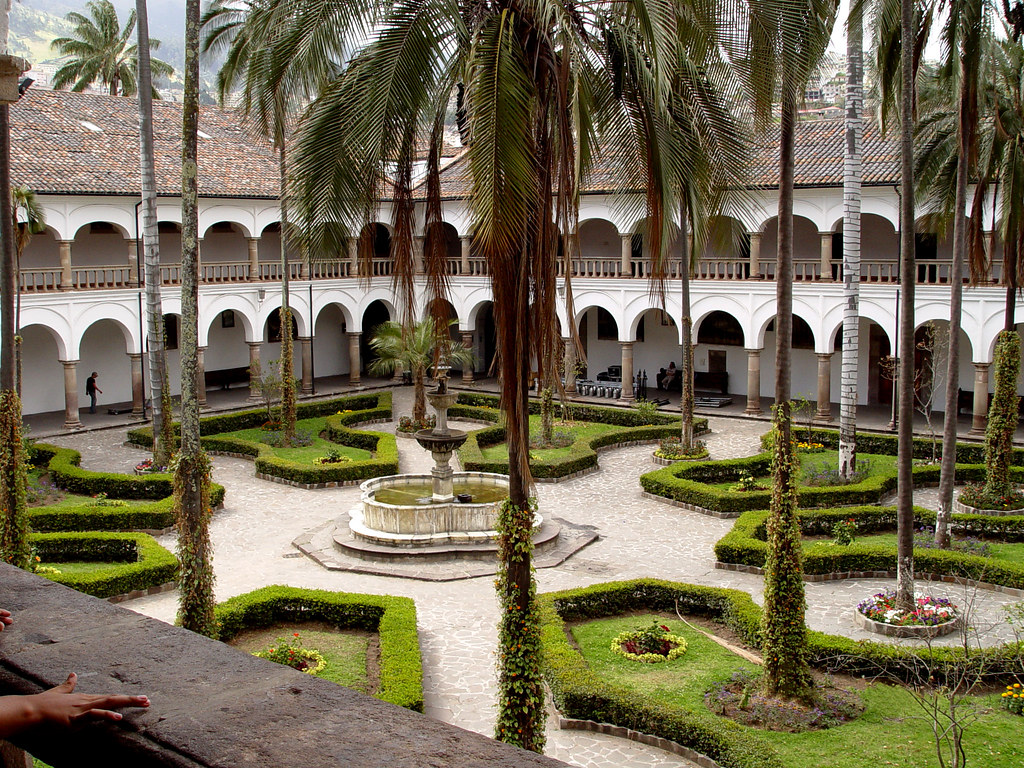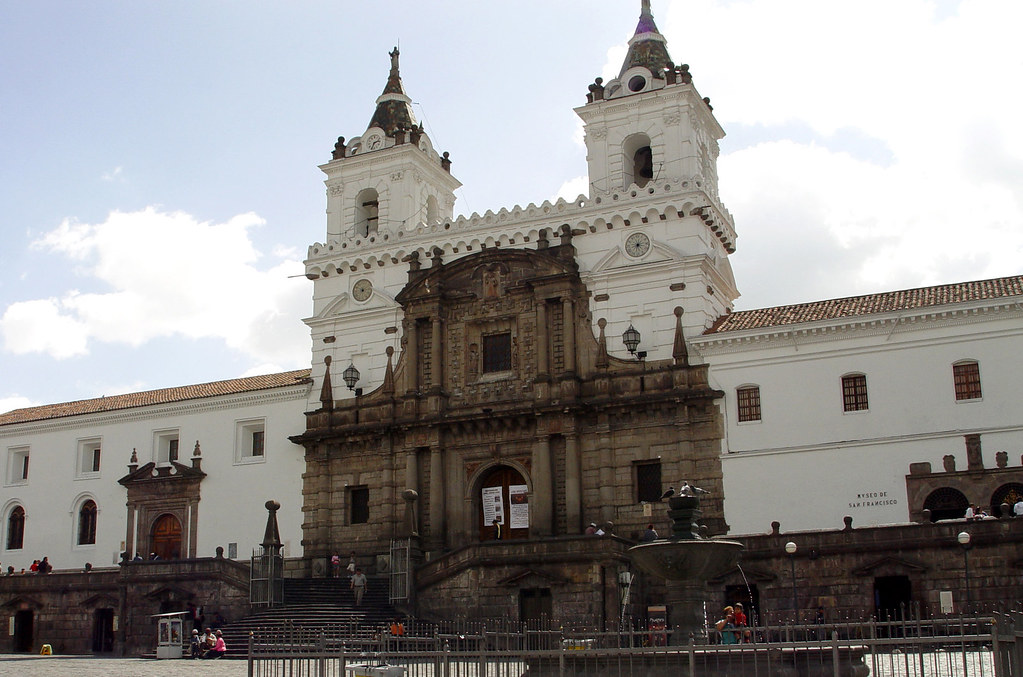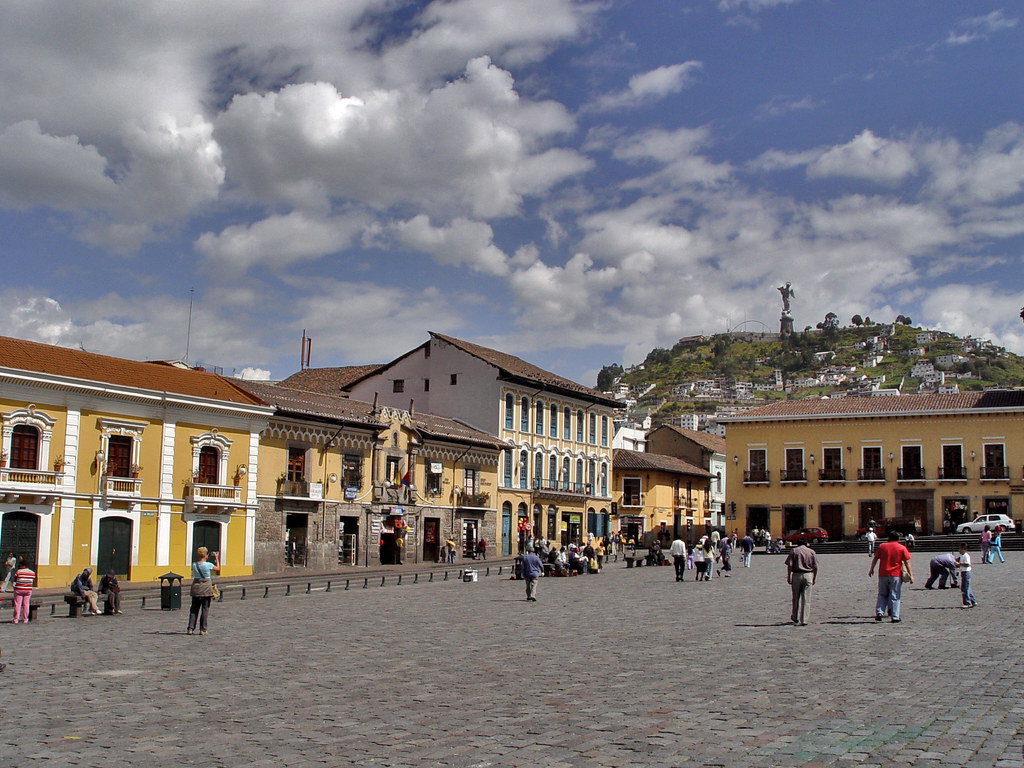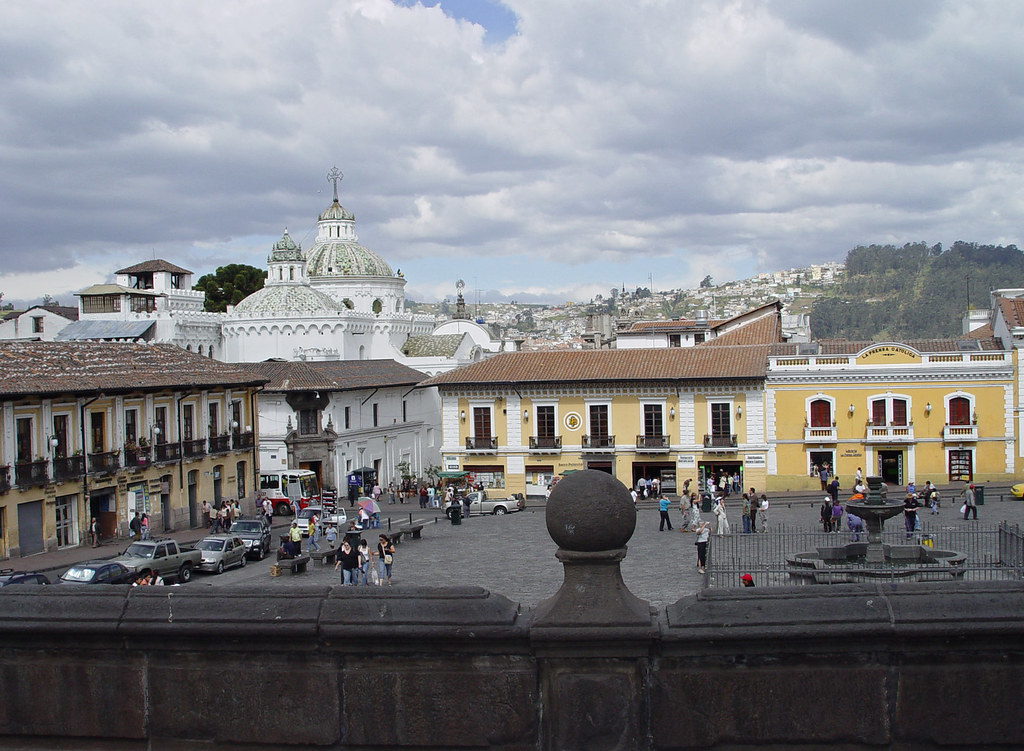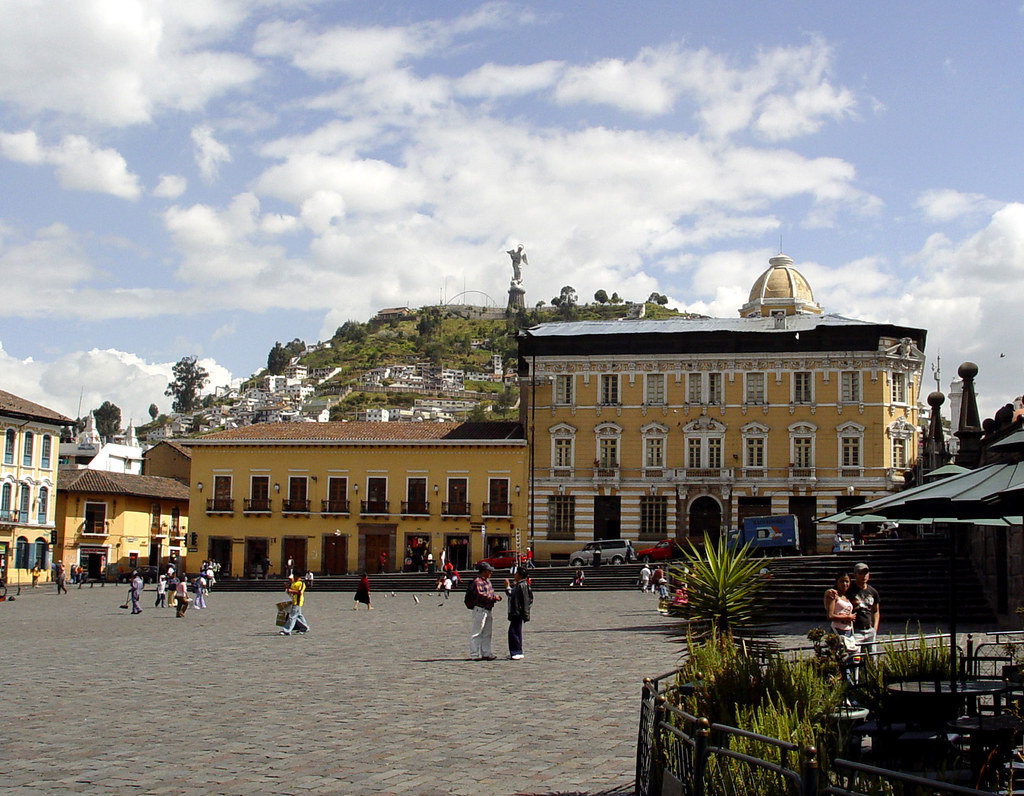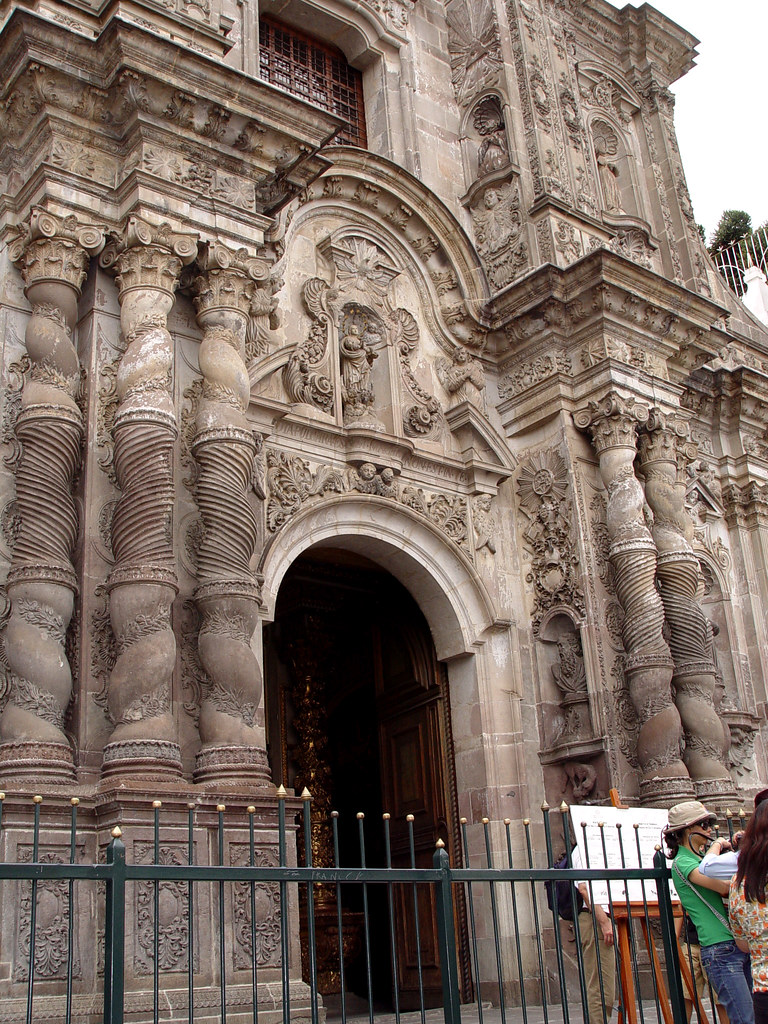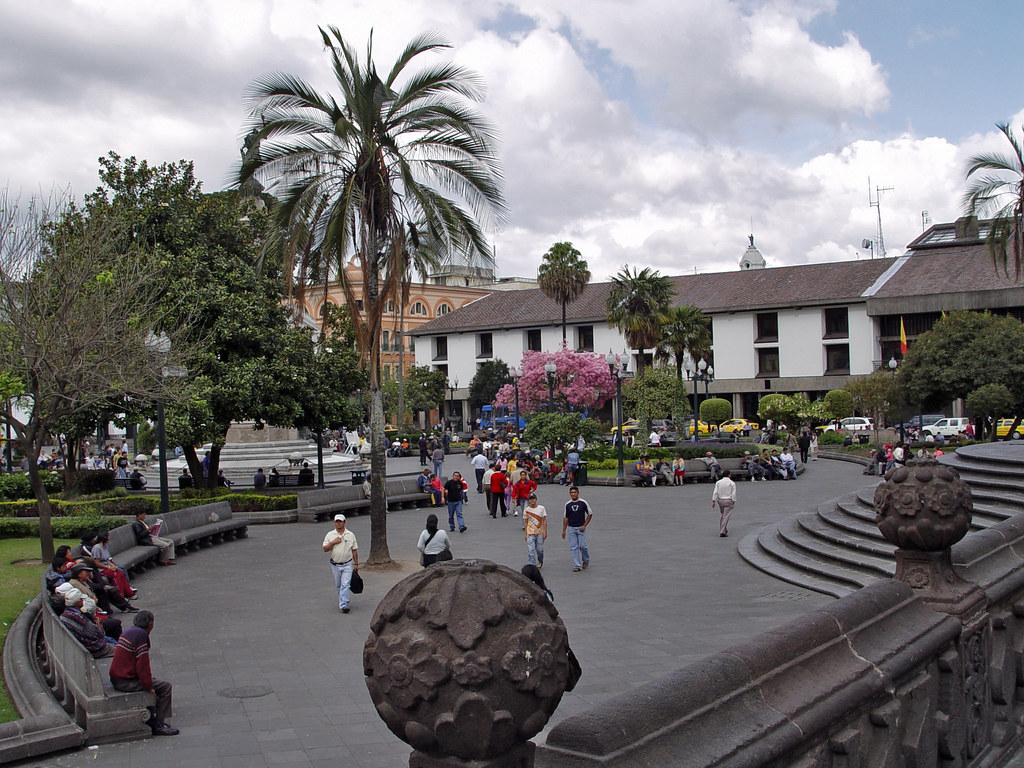Arupo Tree in Independence Square, Quito, Ecuador
After our visit to the museum on the equator, I will now take you to the historic town center of Quito.
Quito was established by the Quitu tribe way back in the first millennium. By 980 CE the Quitu were conquered by the Caras Tribe. Between 1534 and 1556, the Spanish invaded the city, executed the ruling tribe’s leader, named the city San Francisco de Quito, and established Roman Catholicism in the city. Drawing on the native tribes for slave labor, the Spanish began construction only weeks after the invasion. The oldest religious building in all of South America is the San Francisco Convent; its unadorned architecture stayed true to its Franciscan roots:
The attached San Francisco church is a blend of Spanish and Mudéjar architecture and the focal point of the cobblestone square:
The plaza is on the site where the palace of the Incan ruler, Auqui Francisco Tupatauchi, once existed and it was the location where indigenous tribes traded goods for centuries:
The white domed church is La Compañía de Jesús:
From here the steep streets lead to the hill El Panecillo with the statue of the Virgin of Quito:
Just around the corner from San Francisco Plaza is the Jesuit church La Compañía de Jesús with its beautiful baroque columns :
After 300 years of colonial rule, Quito gained independence from the Spanish in 1822 under the command of Simón Bolívar. The city was annexed to Gran Colombia until it dissolved in 1830 when Quito became the capital of Ecuador.
If you are wondering where we saw that beautiful flowering tree in the first photo, it's called the Arupo tree and we saw it in full bloom in Independence Square:


